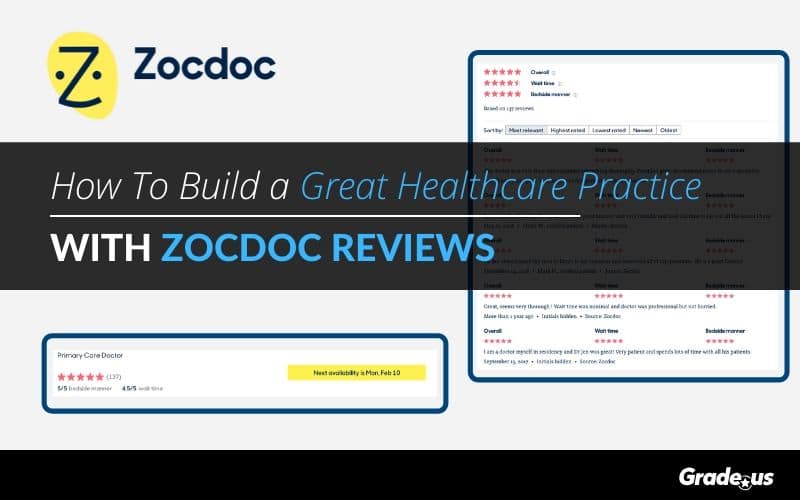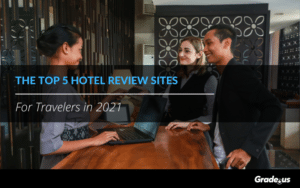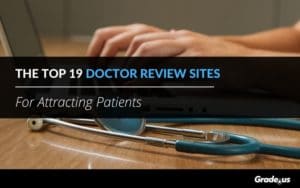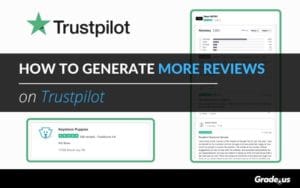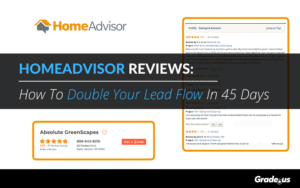Zocdoc, the online medical care booking service, was launched during the TechCrunch40 conference in 2007. Thirteen years later, Zocdoc is a healthcare behemoth and Zocdoc reviews are a major consideration for healthcare practices looking to attract to patients.
Zocdoc isn’t a mainstream review platform.
Don’t let their small size fool you. Zocdoc has expanded its service dramatically covering 40 percent of the U.S. population across 2,000+ cities. They’re used by more than 6,000,000 people each month. When it comes to healthcare, their reach is vast.
Here’s what we’ll cover today:
- Why Zocdoc is important to your healthcare practice
- Who visits Zocdoc?
- How Zocdoc compares to other review platforms
- What should your goals be on Zocdoc?
- Claiming or creating your profile on Zocdoc
- Optimizing your Zocdoc profile
- Requesting, tracking and responding to reviews on Zocdoc
- Your Zocdoc point-of-contact
- Goal tracking via Zocdoc
- Advertising on Zocdoc
Start Generating Amazing Zocdoc Reviews
Why Zocdoc is important to your healthcare practice
The biggest reason?
Oliver Kharraz, MD, The founder, and chief executive of Zocdoc, shares the answer to this question on his LinkedIn profile:
“My family has a 300 year old tradition of being doctors and I believe old fashioned values can be combined with modern medicine and technology. I work at Zocdoc because I want to build a service that puts patients first. “
It’s pretty impressive, right? Here’s why this is so important to your healthcare practice.
Kharraz gets it.
He comes from a long line of doctors; he’s an industry insider who understands the profession at a level that other providers do not. What does this mean from a practical standpoint?
Zocdoc has a patient-centric model.
However, this patient-centric model means they’re also focused on serving doctors.
With Zocdoc, doctors are more discoverable. Patients can find a top-rated doctor in minutes. Even better, Zocdoc reduces the number of no shows by filling last-minute openings in doctors’ calendars.
Let’s take a look at some of the reasons behind their value.
- Zocdoc attracts more than 6 million patients per month
- Their platform has a $2.4 billion valuation
- Their estimated annual revenue is $165 million
- They have 47K+ providers on their site
- Patients have access to more than 1,800 medical procedures across 50 specialties
- Their service enables the patient to find a doctor and book an appointment in as little as 24 to 72 hours
- As of 2017, Zocdoc has 1.88 million + total reviews
- 85 percent of the reviews on Zocdoc are five-star reviews
- 9% are four-star reviews, 2% are three-stars, 2% are two-stars, and 2% are 1-star
- 1.19 million, 64% of the reviews on Zocdoc doesn't have any text
- 685K or 36% of reviews have text
- 88% of reviews with text; 599,779 have five-stars
- 2% of reviews with text; 14,672 have one-star
What do all these stats mean?
Your customers rely on Zocdoc to find the doctors and medical professionals they need. Your competitors rely on Zocdoc to find your patients. Zocdoc is a necessity if you’re looking to attract patients and remain competitive in the long term.
Who uses Zocdoc?
Zocdoc isn’t explicit about their user demographics, but they do mention specific details about the types of users they have. They also discuss what these users value; let’s take a look.
“Demographics partly explain why ZocDoc has been so effective for doctors like him. The median age for his patients, he said, is in the mid-30s — a group accustomed to arranging their lives online. Some longtime patients use ZocDoc for the convenience, he said, but a typical case is “a 24-year-old with a sore throat.
Patients are not selecting doctors blindly online. Patients are asked to rate their experience, and most do so with comments and one-to-five star ratings in three categories — overall recommendation, bedside manner and wait time. Dr. Bailyn, for example, has about 200 ZocDoc reviews.”
It’s about digital comfort levels.
Zocdoc, at its core, attracts users who are comfortable scheduling information online. This gives these users a considerable amount of control for several reasons.
1. Reviews from previous patients shape the overall perception new patients have with a particular healthcare professional.
2. Preparation means users can determine ahead of time if a particular healthcare provider accepts their insurance or means of payment — no need for awkward conversations about insurance and payment.
3. Immediacy. Prospective patients can book an appointment in 24 to 72 hours, something that’s not at all common for those who opt for the direct booking route.
There’s a significant degree of variance in Zocdoc’s user demographics, but their users have warmed up to the idea of doing everything online. Something younger patients gravitate to from the start.
How Zocdoc compares to other review platforms
Zocdoc is very much a niche review platform, but that doesn’t negate its importance to medical professionals. It’s an ideal option if you’re a local or hyper-local practice with patients concentrated in a specific area.
Zocdoc is nowhere close!
When you like at the huge numbers from mainstream sources, Zocdoc seems insignificant. Why would you bother with Zocdoc if you have access to massive numbers from Google, Yelp or Facebook?
Focus.
User focus on other platforms is sporadic. With Yelp, users may be searching for restaurants, plumbers, law firms, bakeries, doctors or auto repair shops.
Zocdoc is different.
Their users are focused on one thing – interacting with healthcare professionals. Their frame of mind is focused on this primary goal. Here’s another thing about Zocdoc and the big three review platforms.
I’ve mentioned this before.
High-volume platforms like Yelp, Facebook and Google provide you with quantity. These high-traffic platforms enable you to build a strong review portfolio that helps to dominate search results. These platforms are highly visible across a wide variety of search queries and keywords in Google.
Zocdoc attracts discerning patients.
As a medical professional, you need both. You need smaller platforms like Zocdoc and larger platforms like Yelp, Facebook or Google reviews.
What should your goals be on Zocdoc?
As I mentioned earlier, Zocdoc is primarily an appointment booking platform. Here’s how they describe it.
“The patient selects an available time slot and books an appointment. The provider gets notified instantly and the patient gets appointment reminders by email and text.”
Here’s an interesting tidbit.
Zocdoc doesn’t share phone numbers of a particular medical professional. They provide you with their name, address, practice-specific information and hours of availability.
Then they jump right into the reviews.
Zocdoc is concerned with one thing and one thing only.
Booking appointments.
Their whole platform is geared around that goal.
Claiming or creating your profile on Zocdoc
There’s a very good chance that Zocdoc already has an unclaimed profile for you on their platform. If you don’t, it’s easy to get started on Zocdoc. Let’s take a look at how you go about claiming or creating your profile.
1. Head over to Zocdoc.com/join
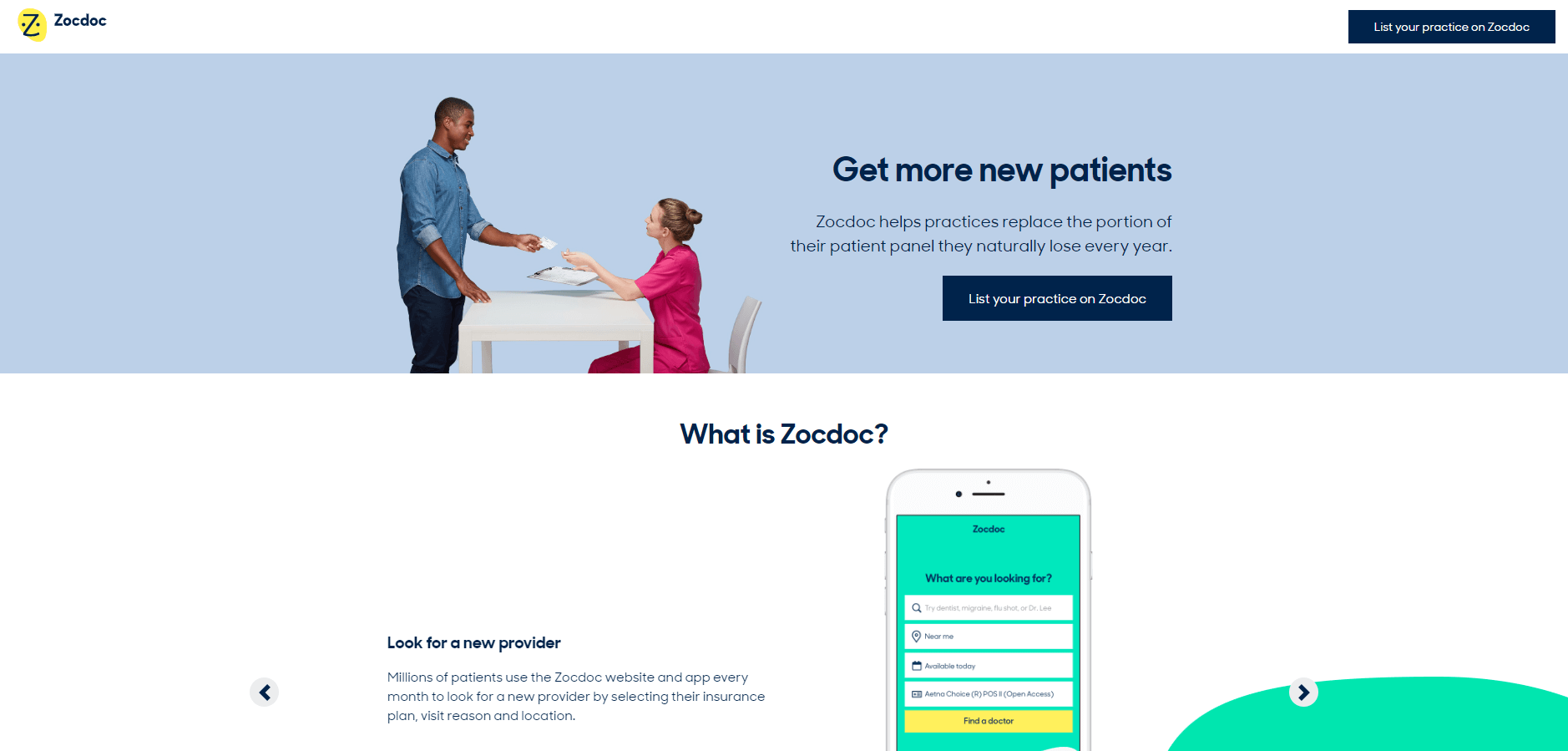
2. You’ll be taken to the pricing page. If your practice is located in any of the 10 states listed the price is $299 / year for up to 5 providers + a booking fee for new patients only.
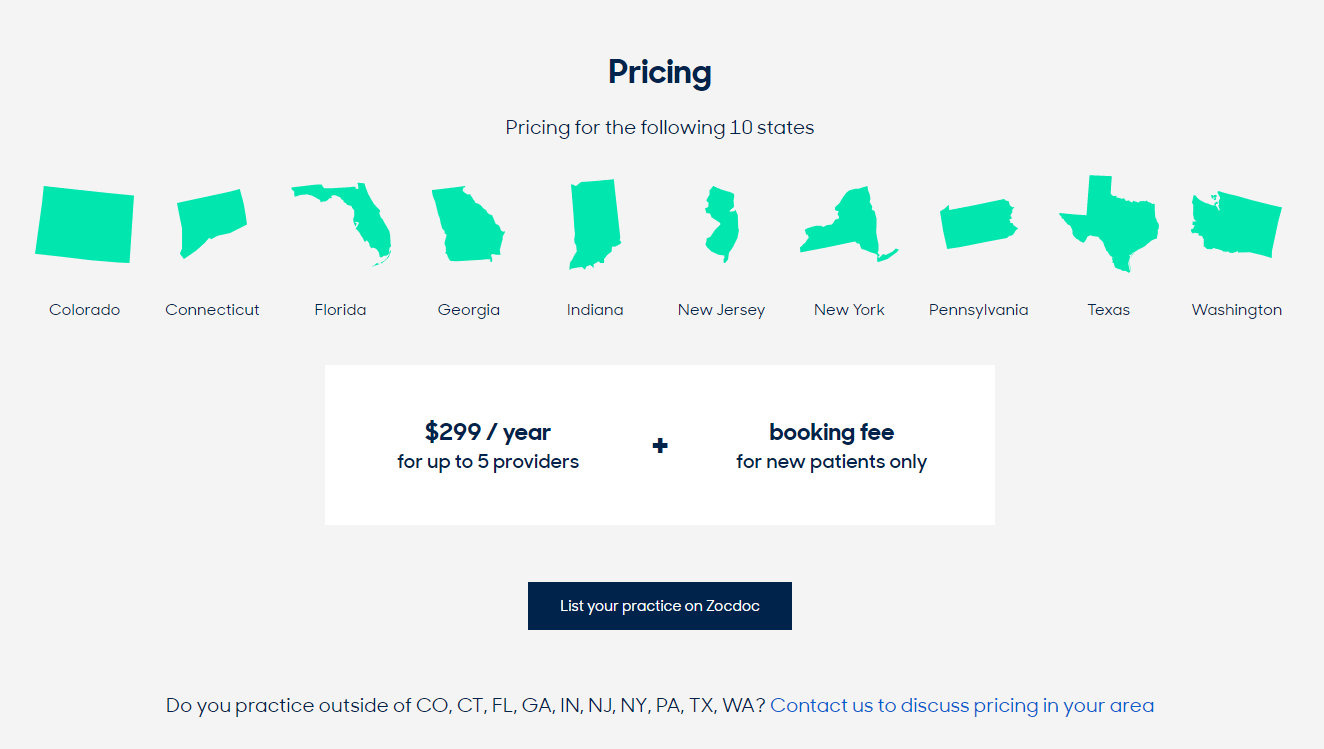
3. Fill out the “Join Zocdoc” form.
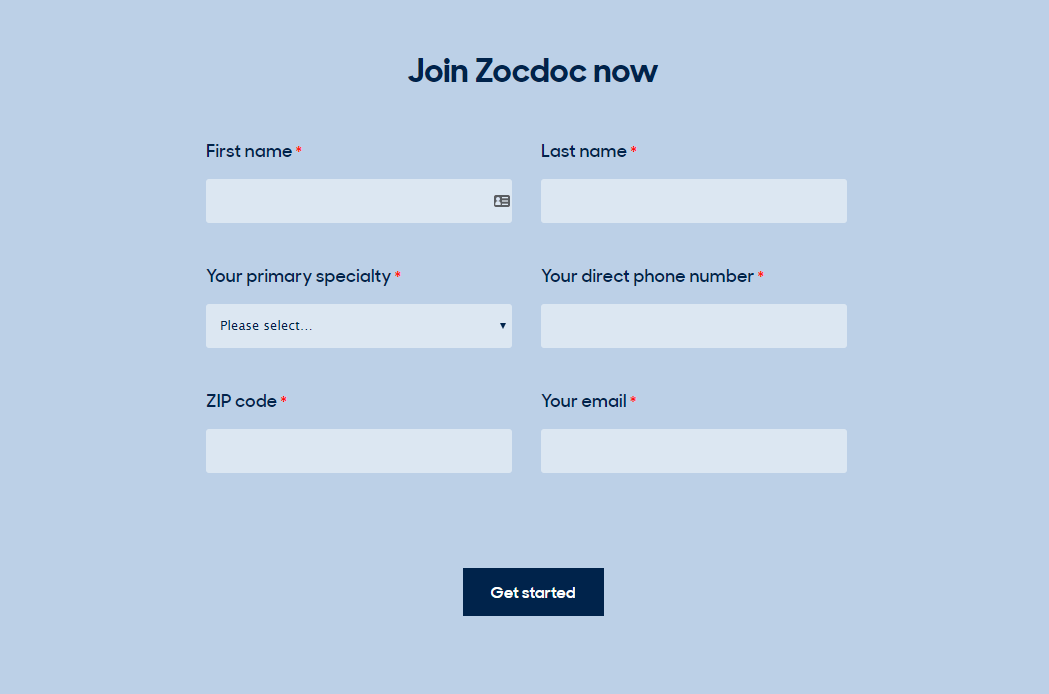
4. You’ll be taken to a confirmation page, letting you know that a representative will contact you soon.
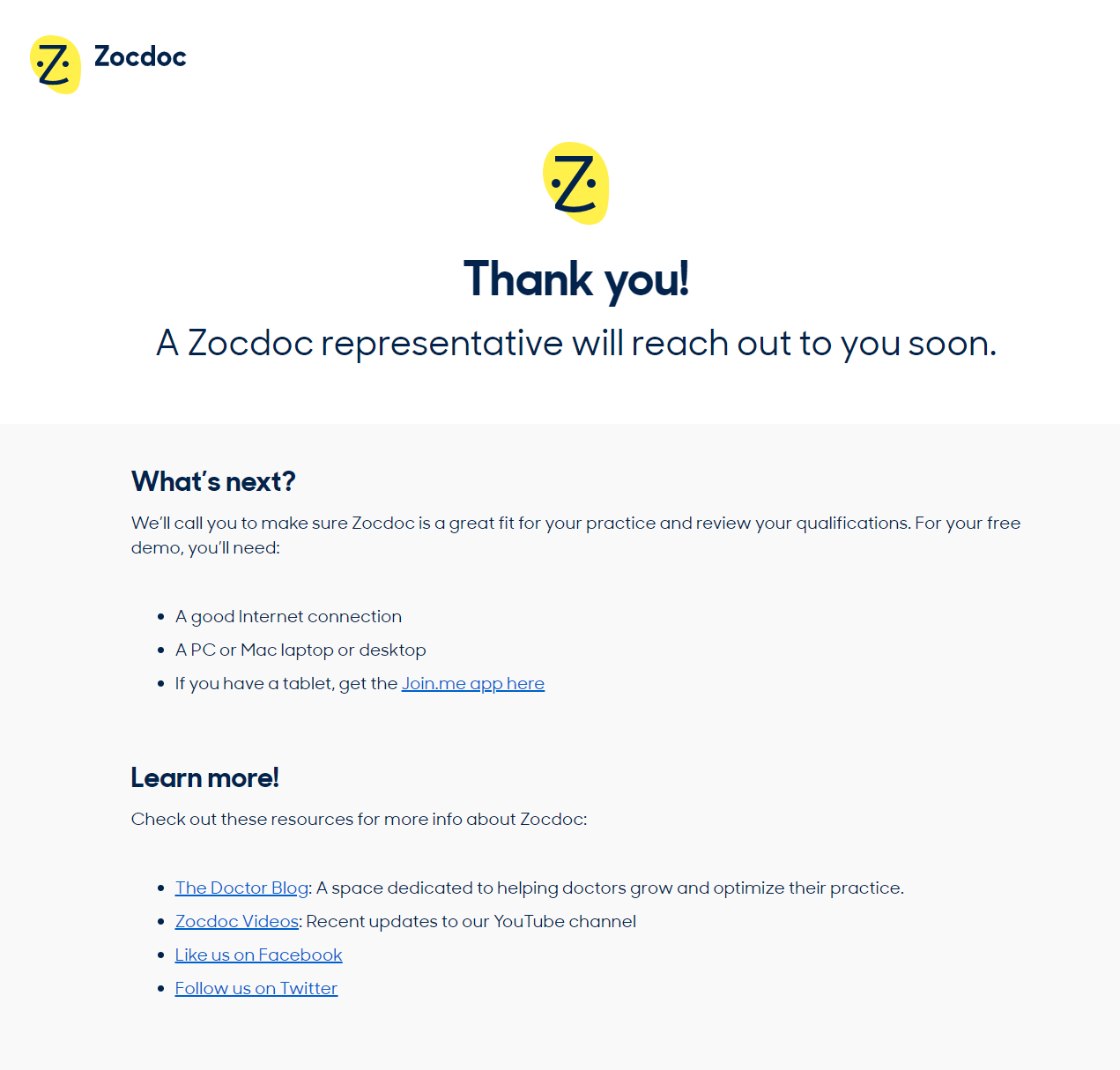
You’ll receive an update from a Zocdoc representative, letting you know if your request to join has been approved.
That’s pretty much it!
A helpful upside to Zocdoc’s appointment setting focus is the fact that they require less information than other review platforms. According to Ashwini Purohit, a former Product Designer with Zocdoc, this is a focus on the provider dashboard as well.
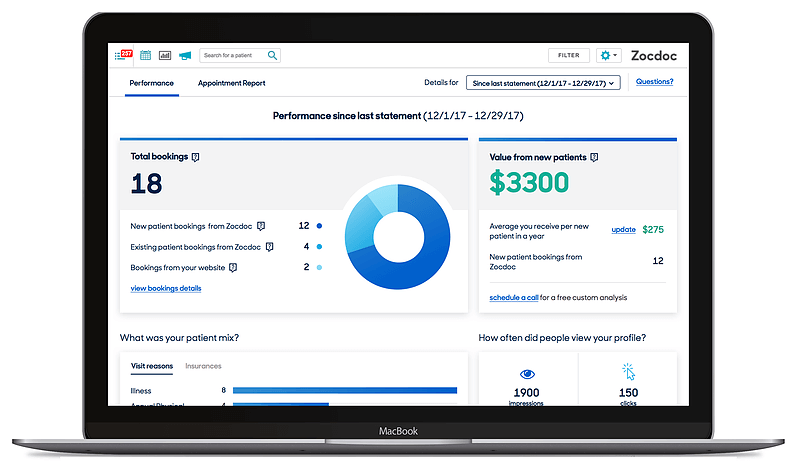
The reasons behind this simplicity?
“My Researcher and I also partnered to conduct 12 1-hour interviews directly with doctors. In between tests we’d synthesize feedback and iterate the prototype(s) for the next doctor. All tests were live-streamed to our team
Examples of key insights:
- Docs don’t want a marketing dashboard. Let’s focus on helping them feel good about their current performance
- Docs are busy, and focus in bursts. Let’s optimize for high information density without information overload.
- Docs don’t trust easily. Pre-populated numbers in the value calculator failed fast. Let’s provide the right balance of free-form and guidance.”
Remember earlier when I mention that Zocdoc’s co-founder understood providers?
This is what I meant.
Purohit’s research shows there’s a focus on optimizing provider profiles around the provider’s needs directly, something that comes from their hyper-focused approach. This isn’t something mainstream providers can provide since their focus is being all things to all reviewers.
This makes optimization on Zocdoc easy, simple, and efficient.
Optimizing your Zocdoc profile
Optimizing your Zocdoc profile is straightforward. You can go about it in two ways.
1. Take the time to enter all of the requested information in your profile. Create a compelling bio for your about section and enter all of the information listed in the table above.
2. Make review collection from patients a habit. The better your aggregate reviews, the easier it is to attract patients. This is important if you’re in a large or competitive area (i.e., Chicago).
The higher your aggregate review rating, the easier it is to attract customers via Google.
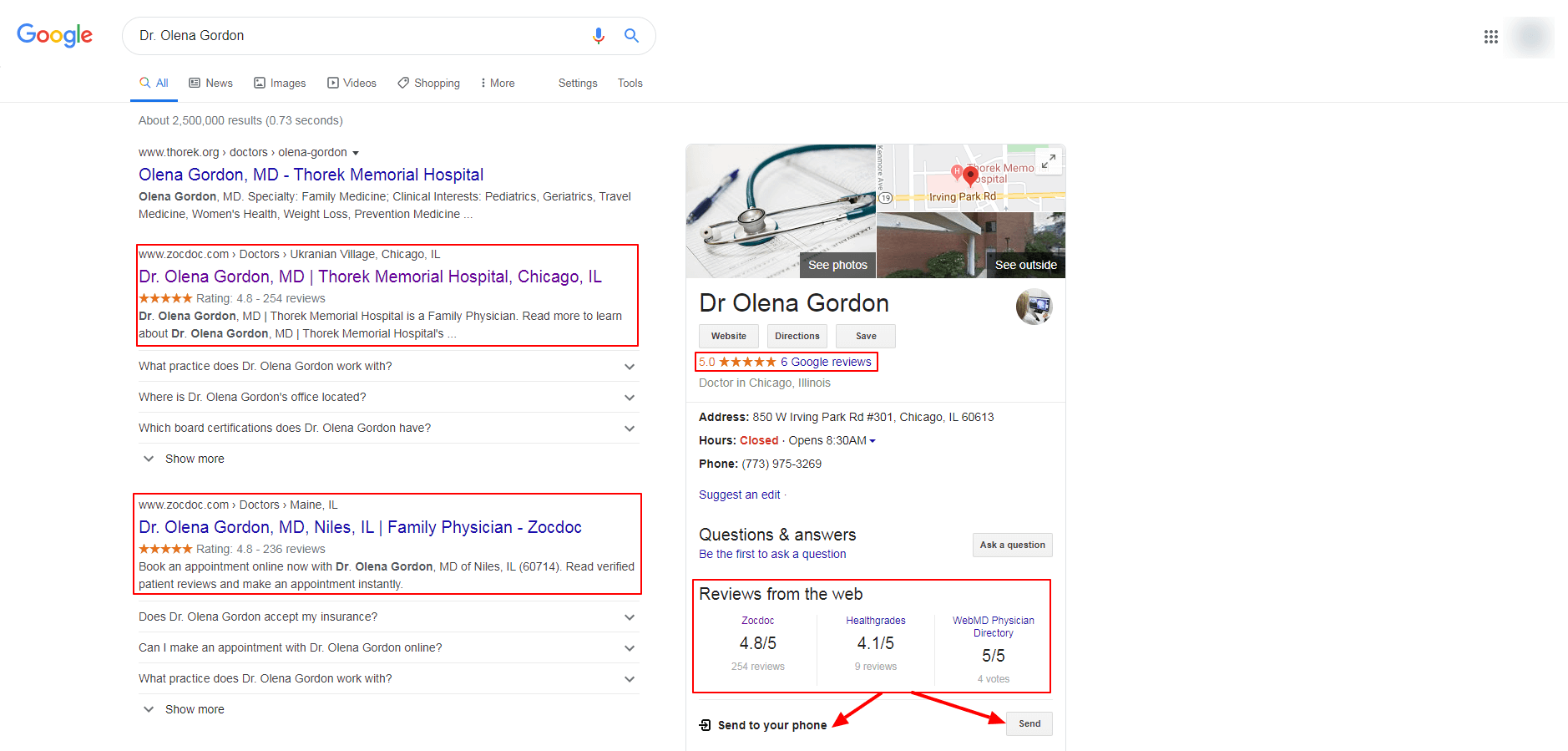
Building a strong review portfolio has a compounding effect on your practice. The stronger your portfolio, the easier it is to outperform competitors on and off Zocdoc. It’s an easy way to win the battle and the war. Let’s look at Dr. David Shanker’s Zocdoc profile to see how a top-rated profile is optimized.
- Shanker has five photos posted. A headshot, as his profile picture, and the rest as images of his practice.
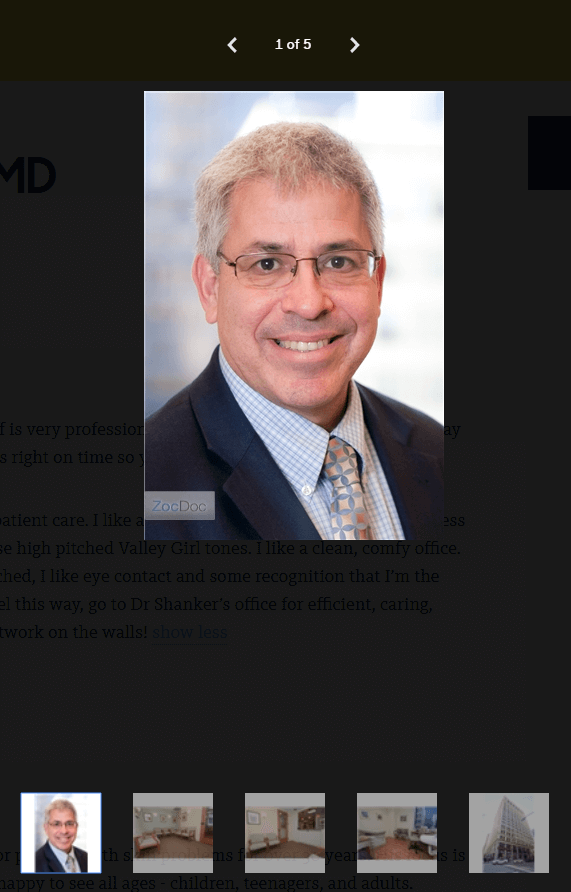
- Next, Dr. Shanker lists his hours of availability. This keeps his practice busy with no downtime and no loss of income due to cancellations. He updates this on a regular basis.
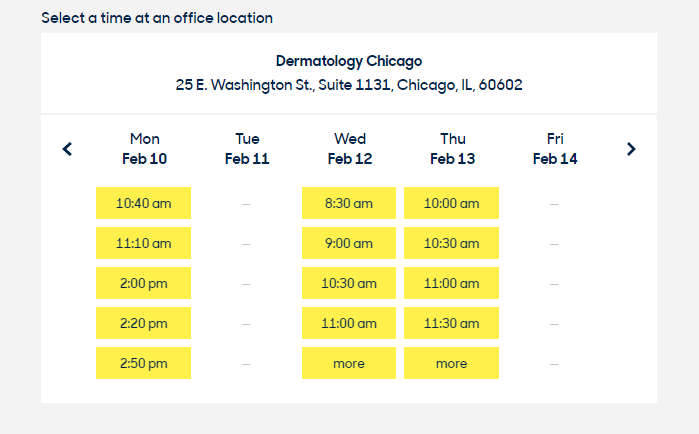
- Continuing on, Dr. Shanker has a detailed bio posted, sharing his credentials, qualifications, specialties and awards. He’s a top-rated professional, and his bio is the perfect place to list these details.
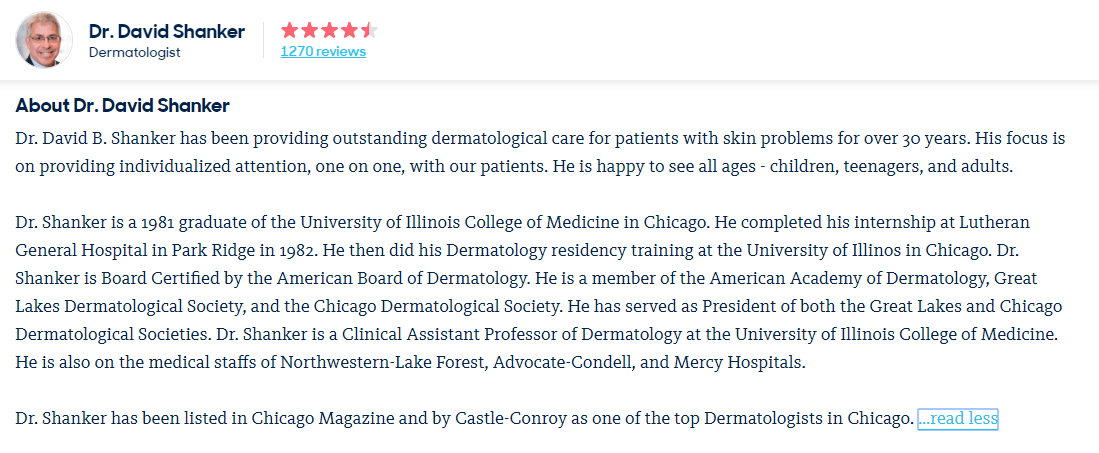
- He provides relevant details for his practice, including: insurances, specialties, practice name, hospital affiliations, certifications, education and training.
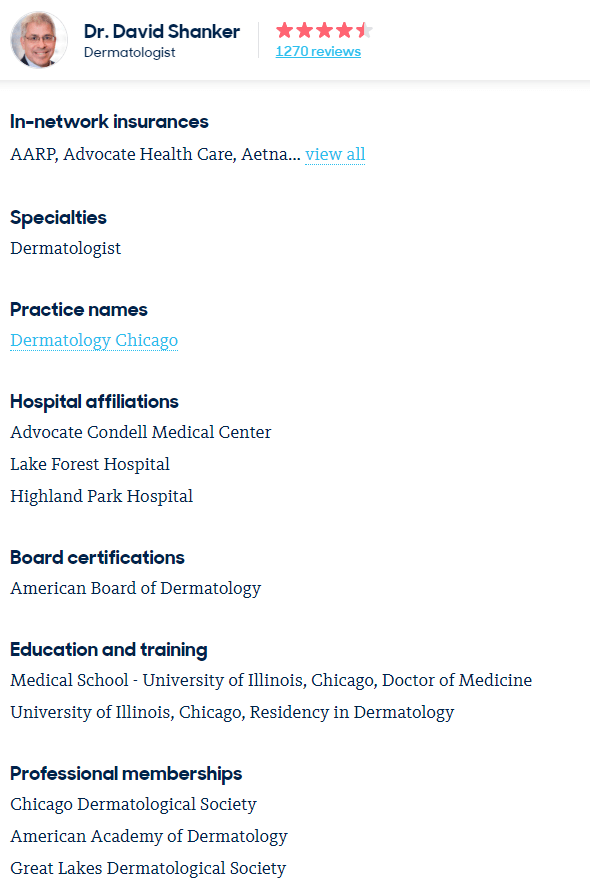
- Dr. Shanker includes more data — awards and publications, languages spoken, gender, NPI number and office location.
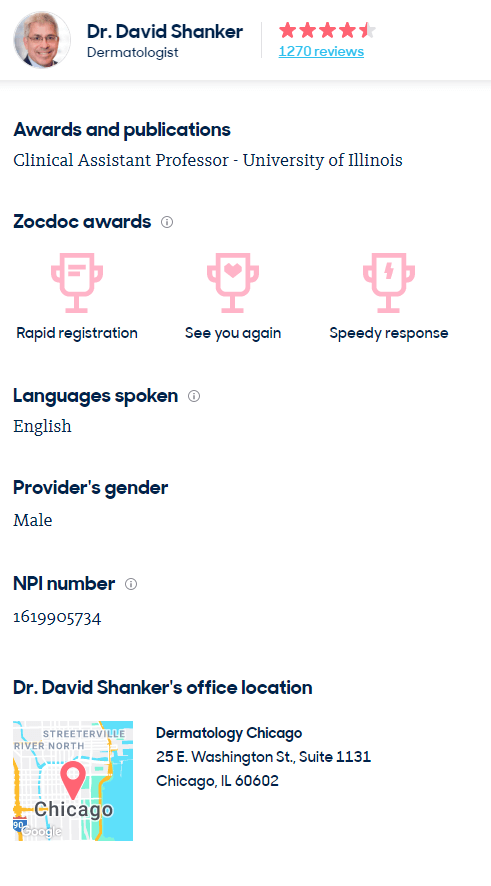
Finally, he has a list of more than 1270 reviews on Zocdoc. Zocdoc has vetted his patients and they’ve provided a significant amount of positive and negative reviews.
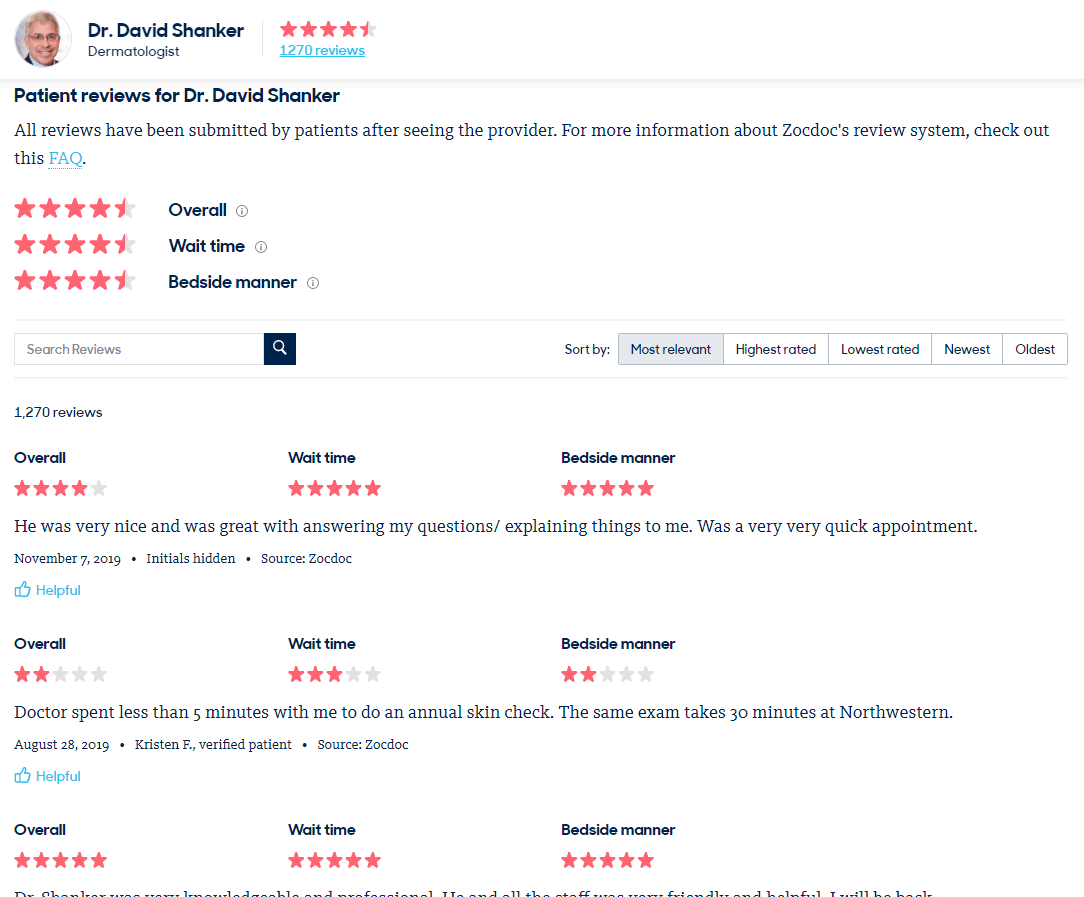
It’s all very straightforward.
Zocdoc was designed by a doctor, for doctors. The Zocdoc team understands how busy medical professionals are. Optimizing your profile is quick and easy but the review portion requires consistent effort to be successful. What makes Zocdoc reviews so unique is the fact that they pursue these reviews on your behalf.
They reach out to each one of your patients for feedback and clarity on their visit with you.
It’s important to note that, while you’re able to respond to patients directly, you don’t have the opportunity to respond publicly to Zocdoc reviews at this time. This is why a new patient’s visit must be exceptional from day one.
These Zocdoc reviews mean there’s a lot at stake.
Requesting, tracking and responding to reviews on Zocdoc
Zocdoc, according to the NYC Data Science Academy, needs to keep their doctors happy.
“Zocdoc has a financial incentive to keep their reviews mostly positive. The doctors pay them to use Zocdoc. If a doctor gets mostly negative reviews, then they will be unhappy, not get patients through the service, and eventually leave.”
It makes sense then that Zocdoc’s review policy is pro provider. All of the reviews that appear on Zocdoc are moderated before they’re posted. Here are their review criteria.
“We moderate our reviews with the goal to build a trustworthy, representative, reliable review system that is helpful to patients and doctors alike.
“We moderate our reviews with the goal to build a trustworthy, representative, reliable review system that is helpful to patients and doctors alike.
Are there instances in which a review may not be posted?
- Profanity: We won’t publish anything profane, vulgar, or otherwise offensive.
- Personal information: We take privacy seriously! We won’t post reviews that include personally identifiable information such as a patient’s full name, phone number, or email address.
- Pricing specifics: These comments tend to reflect more on insurance providers than physicians.
- Accuracy of treatment or diagnosis: We don’t publish claims about the accuracy of a practitioner’s treatment and diagnosis, because they are factual matters that we cannot verify.
Promotional content: We want our reviews to be as relevant as possible, so we don’t post reviews that promote an unrelated website, product, topic, or other item that is unrelated to the patient experience.”
What does this mean for patients?
Unhappy patients are more likely to post a negative review on a different platform (e.g., Yelp or Google reviews). This means you’ll need to focus on building your review portfolio on a variety of platforms, as a buffer against an inappropriate competitor or disgruntled patient behavior.
Zocdoc reviews focus on four dimensions.
1. An overall rating that covers all aspects of your patient’s visit.
2. Wait times. This encompasses a variety of wait times. The amount of time a patient spent in the waiting room, the amount of time it took from door to doctor, and the amount of time it took to complete their visit.
3. Bedside manner, support staff, nurses and doctors behaved during a patient’s visit. Were they attentive, did they listen? Did they invalidate the patient’s experience or listen well?
4. Other details mentioned in a patient’s review, including specifics; general details about their problems, the provider’s ability to answer specific questions and their experience during their visit.
A post from the NYC Data Science blog breaks down the bigrams in one and five-star reviews on Zocdoc.
Soft skills, communication, bedside manner and attentiveness play a significant role in the minds of your patients. This makes sense when you realize patients lack the professional expertise to evaluate your performance. If they had that expertise, they wouldn’t need you, right?
Your patients are no different.
Here’s another interesting point about requesting reviews on Zocdoc.
They do it for you.
“All of the reviews on Zocdoc have been submitted by patients after seeing the provider. We show two types of feedback: Zocdoc Patient Reviews and Partner Reviews. Our goal is to enable reviews that are fair, accurate, and trustworthy. Two things set these reviews apart from others:
- Our reviews come from real patients, collected through closed-loop systems. There’s a huge difference between open-loop and closed-loop review systems. In an open-loop review system, reviews can be written by anyone, such as people who’ve never actually seen the doctor, or even by the doctors’ staff themselves! Zocdoc uses a closed-loop system, which means every review is written by an actual patient, only after their appointment.
- We show representative feedback. We solicit reviews after each and every appointment, which generates a higher volume of reviews, and means that it’s not only the extremely happy or unhappy outliers that proactively reviews. This results in more representative sample of patient feedback (good, bad, and in-between) to help you find the right doctor.
As part of our effort to provide you with even more representative information from a variety of patients (including those who don’t book through Zocdoc), we include Partner Reviews for some doctors. These reviews are collected by independent patient satisfaction survey providers, like Press Ganey (more info here), who also take steps to only solicit reviews from real patients. (Learn more about Partner Reviews here.)”
Zocdoc requests reviews on your behalf. Does this mean that you shouldn’t request reviews then?
Absolutely not.
It’s still important that you invest the time and effort required to build a strong review portfolio. There’s a subtle problem with this, though.
Professional dignity.
There’s a certain amount of professional dignity and distance that goes with your role as a medical provider. It’s something many won’t admit, but it’s important to preserve that in your role with patients. Can you picture a heart surgeon begging patients for reviews?
It’s a little off-putting, isn’t it?
This is an instance where it’s important to maintain a certain amount of professional distance. If you’re building your review portfolio and you’d like to request a review you can make sure your request comes from:
- Your office
- Someone else in your office (e.g., an office manager)
- A reputable third party
It’s a simple way to maintain the right amount of professional distance.
Your Zocdoc point-of-contact
When it comes to contact info, Zocdoc isn’t all that clear. Visit their contact page, and you’re greeted with this:
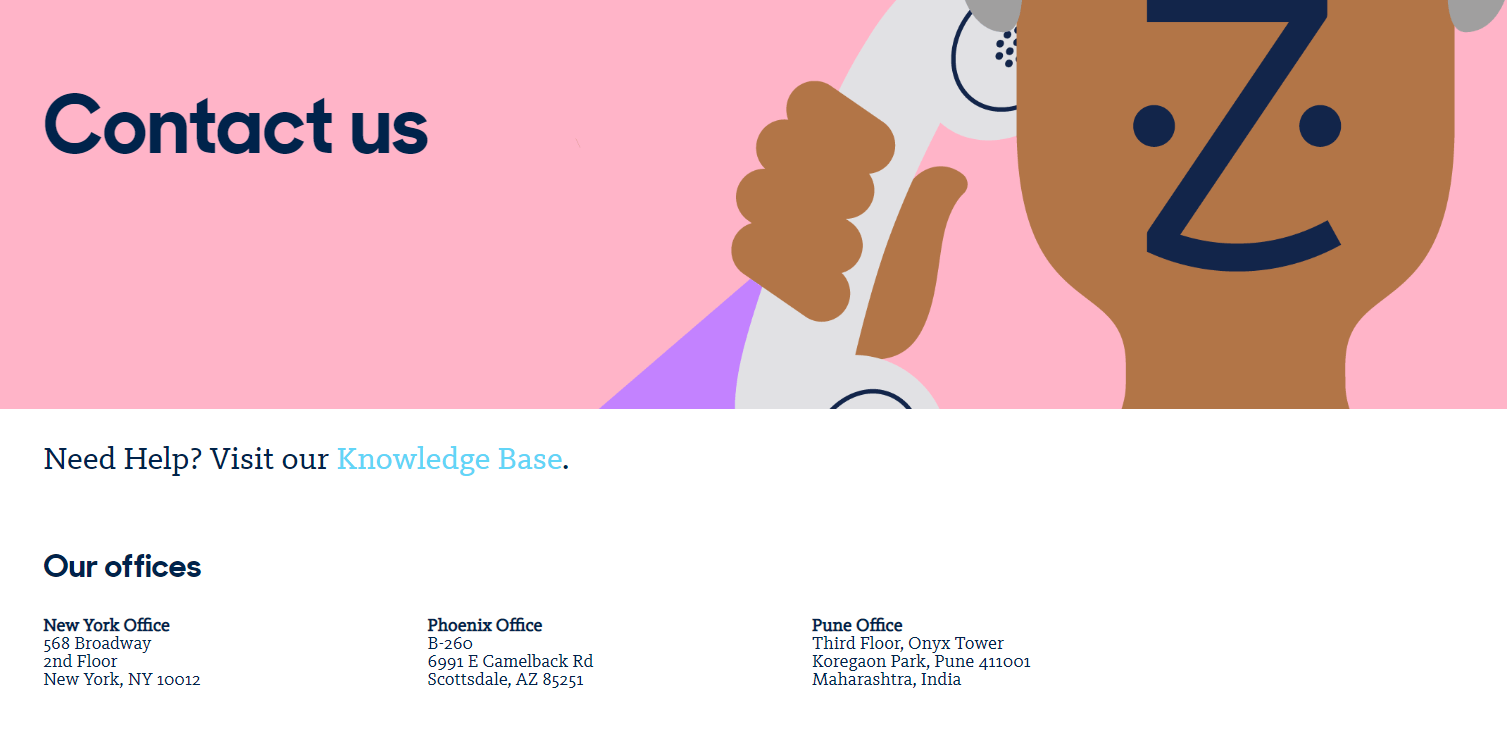
Their address works if you’re looking to make an in-person visit.
You aren’t, are you?
Let’s say you need help, but you aren’t able to make the trip to their offices, what do you do? You visit the Zocdoc knowledge base.
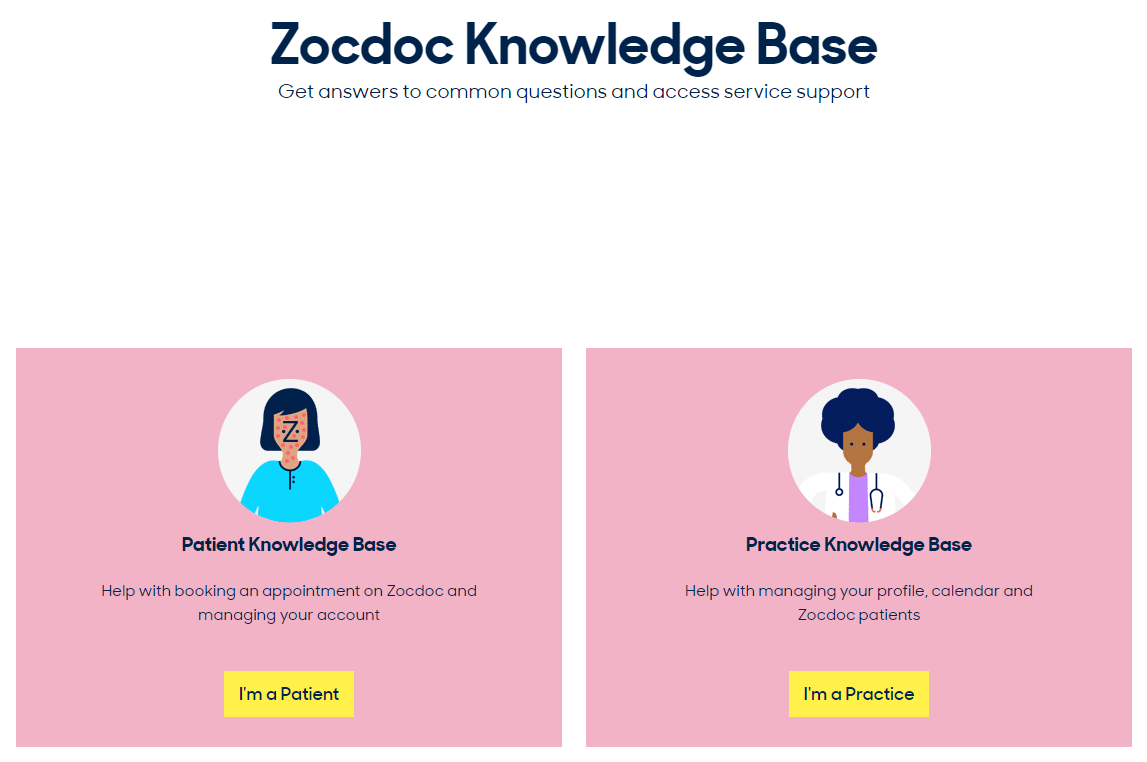
Okay then.
Let’s say you head to the provider portal, search for answers but still fail to find the results you’re looking for.
What do you do?
You seek out their hidden contact form to get in touch with their service team. If you look at the bottom, you’ll also see that you’re given a number, (866) 962-3621, you can call.
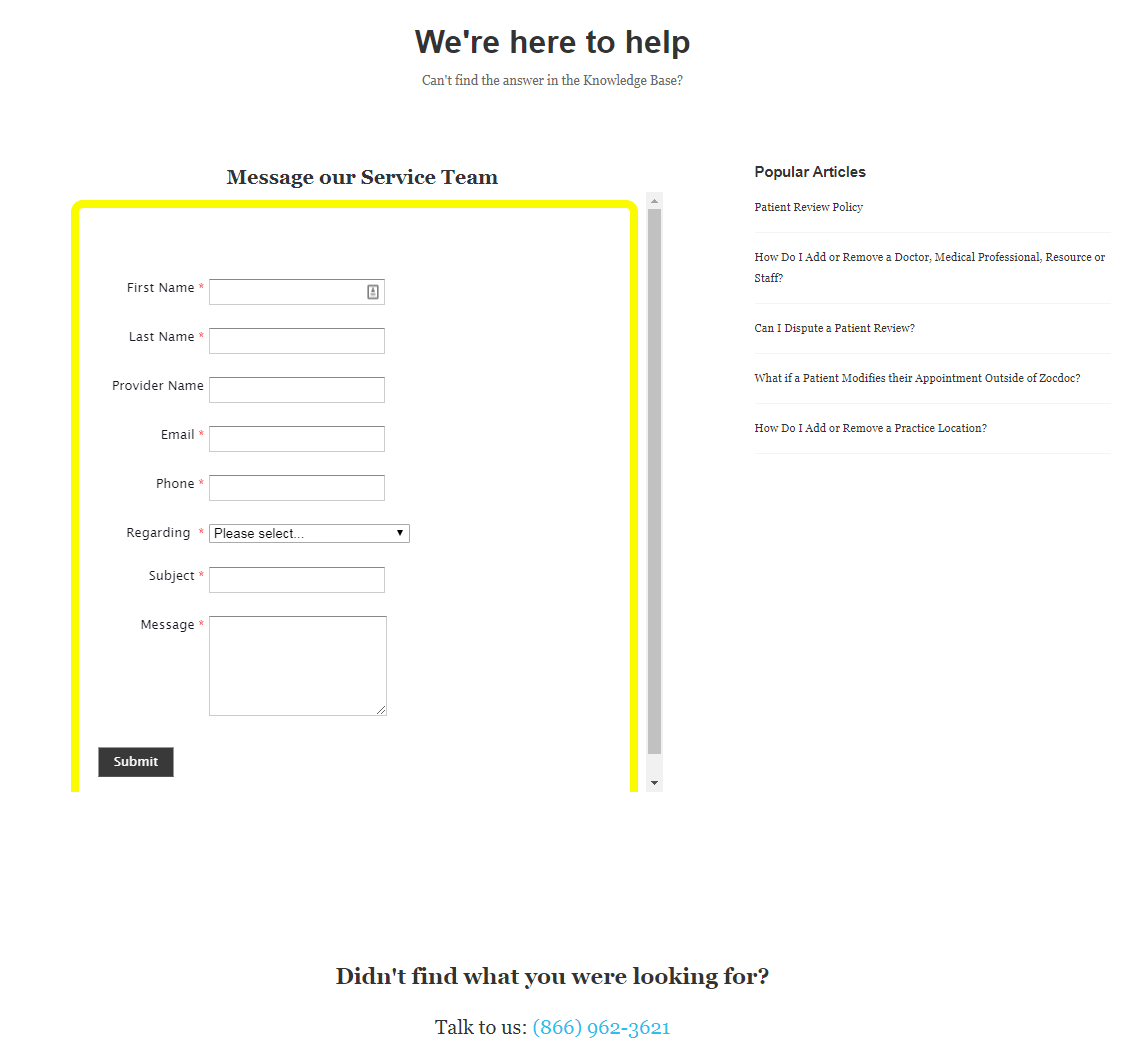
This seems like a win, and it is, but it may change in the future. Be aware that this may require some digging.
Goal tracking via Zocdoc
Zocdoc provides providers with their dashboard. Their primary focus is setting appointments, so their dashboard is a simple and effective way to track their performance.
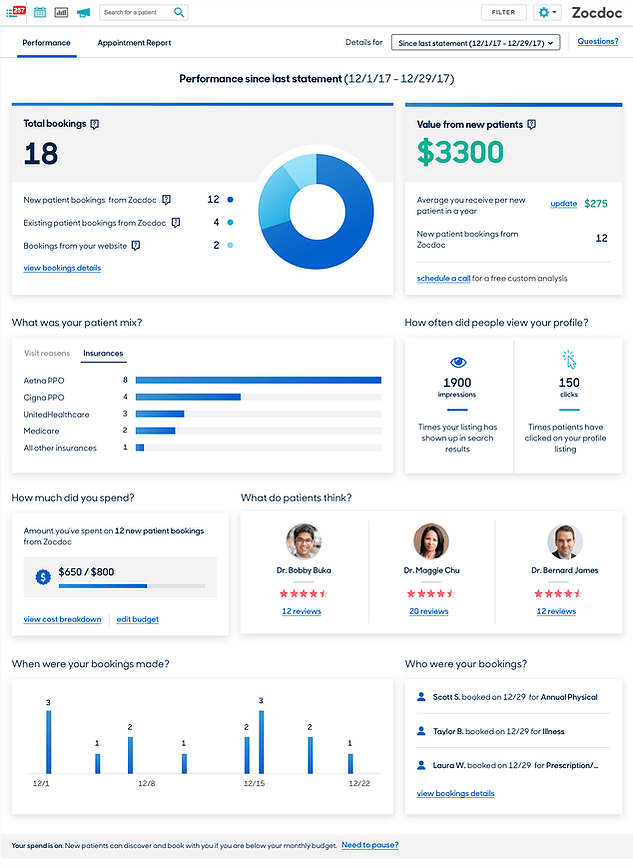
The provider dashboard offers providers a look at the following metrics:
- Total bookings (new, existing patient bookings from Zocdoc, bookings from your website)
- Value from new patients (average received from new patients in a year)
- What was your patient mix (e.g., Aetna PPO, Cigna PPO, United Healthcare, Medicare)
- How much did you spend (amount spent acquiring new patients on Zocdoc)
- Profile views (e.g., impressions vs. clicks)
- Patient reviews
- When were your bookings made (telling you when to spend money on sponsored listings)
- Who were your bookings? (truncated patient details)
There’s additional detail in each of these reports, but it’s a quick, efficient and concise snapshot of your performance as a provider on Zocdoc.
Advertising on Zocdoc
Zocdoc used to bill providers on a subscription basis ($3,600 annually). But they realized this wouldn’t be viable for providers in rural areas where they wanted to expand.
Simplicity is a theme.
Providers pay a nominal fee per year + a fee for new patient bookings. It’s a win/win as it increases Zocdoc’s income but reduces the fee providers are expected to pay initially.
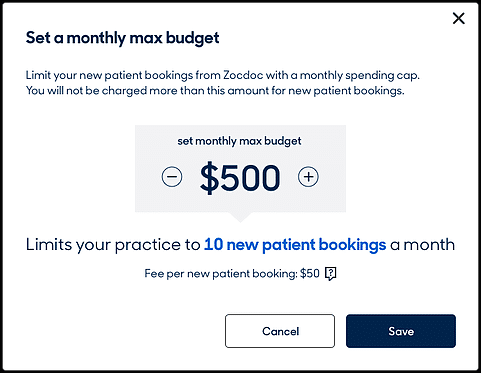
As a provider, you’re able to limit the amount spent on new bookings each month.
What about Sponsored Results?
“When a patient makes a relevant search on Zocdoc, your Sponsored Results advertisement will be featured above the rest of marketplace search results in a separate section, making you the first doctor they see when they’re looking to book an appointment.
“Patients come to Zocdoc looking for a new doctor,” says Carol Skordas, Sponsored Results Product Manager. “Sponsored Results let’s doctors optimize that traffic and get in front of the best new patients for their practice.””
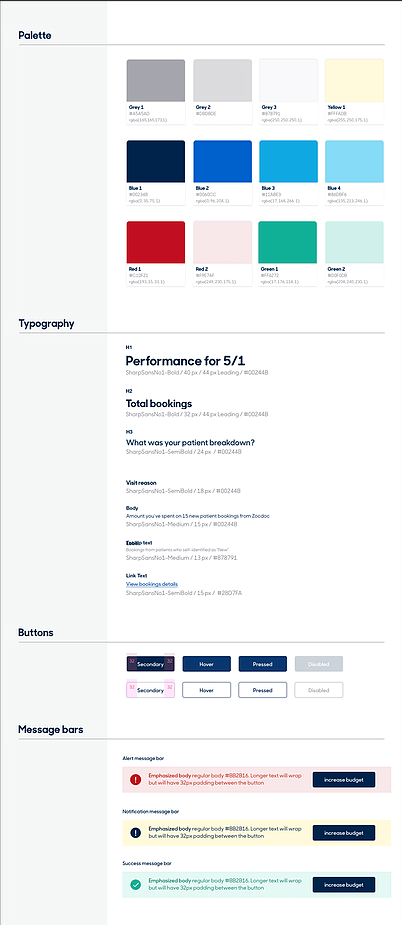
Sponsored results are billed on a cost per impression basis, with no minimum ad spend required. You’re able to customize the amount you spend per day based on your budget and needs for your practice.
“After you activate Sponsored Results, you will be taken to your performance dashboard where you can keep track of your views, clicks, acquired appointments and spend. You can see your Sponsored Results performance dashboard at any time in your Zocdoc account.”
If you’re already using Zocdoc and Sponsored Results is available in your market, you can access this program via your dashboard and begin advertising by setting your daily budget and bid. You can also speak with an ad specialist at Zocdoc, (877) 454-4295, if you need more help and support.
A thriving healthcare practice is easier with Zocdoc
Zocdoc is provider friendly.
Their focus is simple and focused on one thing. Setting appointments for their providers. This means their interests are aligned with yours.
Zocdoc isn’t a mainstream review platform.
That’s good news.
Zocdoc continues to grow; their growth is your opportunity.
Their service covers 40 percent of the U.S. population, they’re present in 2,000+ cities and used by 6,000,000 people each month. The requirements for a thriving practice is simple.
Exceptional service + attentive customer service + Zocdoc = Rapid growth and expansion.
Align Zocdoc’s interests with yours and you’ll find growth becomes simple, efficient and automatic.

